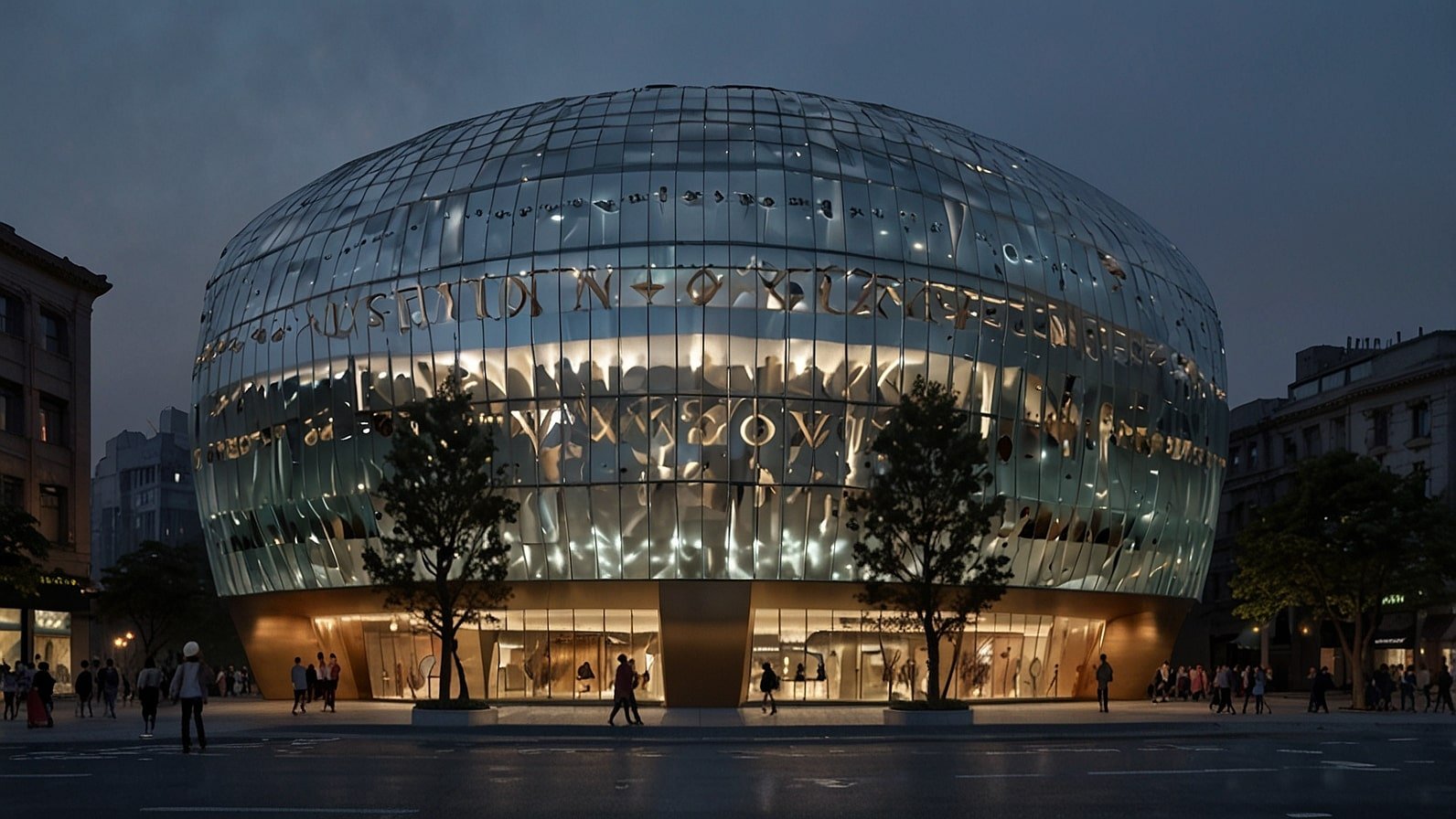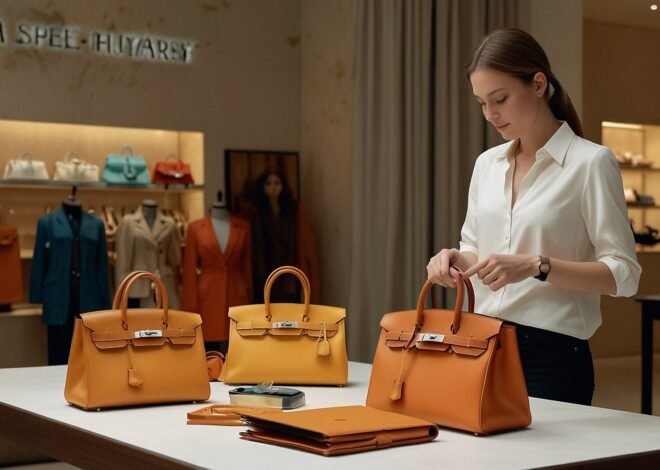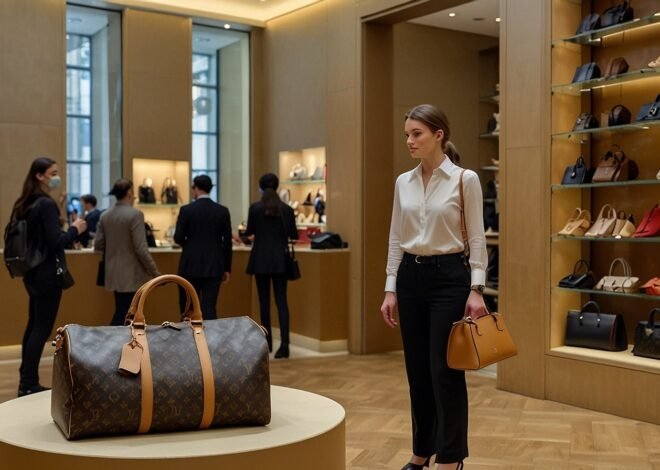
Louis Vuitton’s Shanghai Flagship Redefines Luxury with Bold Design
Louis Vuitton launched its newest retail innovation in Shanghai on July 19, 2025, an initiative that showcases the French luxury house’s innovative approach to transforming the global market. The flagship store is in the form of a ship, 30 meters high, and the store carries the name of a vessel: The Louis. Situated between the busy Nanjing Road in Shanghai, this architectural gem hosts an exhibition hall, a café, and a carefully curated shop that intertwines the ideas of art, business, and social media attractions. The opening was surreal, with thousands of people thronging the building to take snapshots of its gleaming exterior, and it is a turning point of sorts in the fortunes of Louis Vuitton as it copes with a slackening luxury market in China and tries to reinvent what a flagship store can be.
An Answer to Market Competition
A combination of headwinds in the luxury business presents a challenge, especially in China, which was a key growth driver for brands like Louis Vuitton. Following several years of 10%+ growth, the Chinese luxury market is expected to shrink by more than 18% in 2024 and remain flat this year (2025). LVMH, Louis Vuitton’s parent company, reported an 11% organic revenue decline in the Asia-Pacific region (excluding Japan) in the first quarter of 2025. It is on this backdrop that the brand proposes a calculated risk in the form of the Louis with the intent of renewing consumer interest. Instead of sticking to the traditional retail, Louis Vuitton is staking its future on experiential tours to attract a younger and more discerning customer base.
The futuristic-like image of the store, which follows a ship design, is a visual phenomenon aiming to take over social media accounts. The exterior is a high-tech combination of glass and steel that mirrors the Shanghai skyline, and inside, it features rotating shows and interactive art displays. Made in homage to the growing preference for lifestyle experiences, the eatery features unique offerings that reflect the brand’s visual identity, including monogrammed pastries and specialty cocktails. This multi-sensory concept is meant to change shopping to an experience and this would attract the consumers who desire more than a transaction.
The Rebranding of Luxury Promise
When was The Louis produced? The high price is prompting luxury brands to defend their pricing structure as more buyers appear to demand greater transparency. Additionally, Louis Vuitton and its competitors have increased prices substantially over the past five years. Some of its iconic handbags, such as Speedy Bandouliere, have increased by almost 54% since 2019. The focus on profitability, however, has been influencing aspirational buyers, who want something different amidst the post-pandemic boom, leading to brand adoption, especially in China, where the economy is facing uncertainty and turning to domestic brands to reshape consumer tastes.
The Louis is one of those efforts to reach out to this changing demographic. With the combination of art and culture, Louis Vuitton is falling into the vision of luxury as an experience rather than a product. The opening of the store featured an exhibition space that was launched with a display of contemporary Chinese artists, highlighting the store’s interest in local relevance. This hyper-localization idea of making offerings to resonate with local tastes has become imperative as international brands engage in stiff competition with local labels that are becoming more attractive to young consumers. As an example, the store specializes in exclusive capsule collections that reflect both the tradition and modernity of Shanghai, such as silk scarves adorned with dragon motifs or leather bags emblazoned with the city’s patterns.
The Social Media Element
In an age of Gen Z and millennials who control luxury, social media has become the stage on which brands fight to be relevant. Louis is Instagram and TikTok-focused. Its exhibition-worthy, photo-friendly stands and installations stimulate visitors to post about their experiences, widening the brand coverage. When the opening came, the influencers and celebrities mingled with the local artists, and their posts filled the platforms with pictures of the nautical interior of the store. This is an organically occurring sense of marketing overall, as the industry is moving more towards pull-based methods (whereas brands encourage audience interest as opposed to shoving merchandise under their noses with conventional advertisements).
The Instagrammable look and feel of the stores and their limited-edition menu in the cafe is a genius idea on this level. People line up not only to have a coffee but to get themselves spotted in a Louis Vuitton-brand outlet. The dissolution of retail and living is indicative of an emerging trend in luxury houses, which feature images of art projects in Versace advertising or even an immersive collection of appropriated winter 2025 jerseys at Balenciaga. Louis Vuitton is able to establish itself as a tastemaker and not a seller by developing spaces that make people feel like they are visiting a cultural center.
Challenges Ahead
Nevertheless, there are risks to this ambitious enterprise of “The Louis”. This chilly global economic condition and weak consumer confidence make the Chinese market a tough nut to crack. In the past, luxury brands used China as a giant growth engine, and this is not going to change in the near future as the Chinese national pride will spark new interests in local brands, leaving foreign brands like Louis Vuitton struggling to survive. The question facing some analysts is whether experiential retail will be able to compensate for the broader decline in luxury goods purchases, especially among trade-down buyers in the aspirational category.
In addition, the design of the store is high concept, which casts doubts on the scale’s ability. Although urban elites in Shanghai may find this interesting, extending this idea to other markets may stretch resources. LVMH, the parent company of Louis Vuitton, is already trying to overcome the pressure of supply chain issues, and recent accusations of labor exploitation at an Italian cashmere supplier have cast a dark shadow over its reputation. To continue being alluring, Louis Vuitton strikes a balance between innovation, craftsmanship, and the exclusivity that defines its brand.
A Road Map into the Future
Louis is not just a store but a manifesto of future Luxury Retail. Though brands struggle to find their footing in a low-growth world, Louis Vuitton Shanghai’s experiment sets a clear model of how to reach out to a new type of consumer. The brand is challenging the meaning of being a luxury powerhouse in 2025 by integrating art, culture, and commerce. Whether the strategy will turn things around in the sector or not has yet to be determined, but in the meantime, it must be said that The Louis is a ballsy declaration of intent that is going to enter unknown waters with swagger and style.


